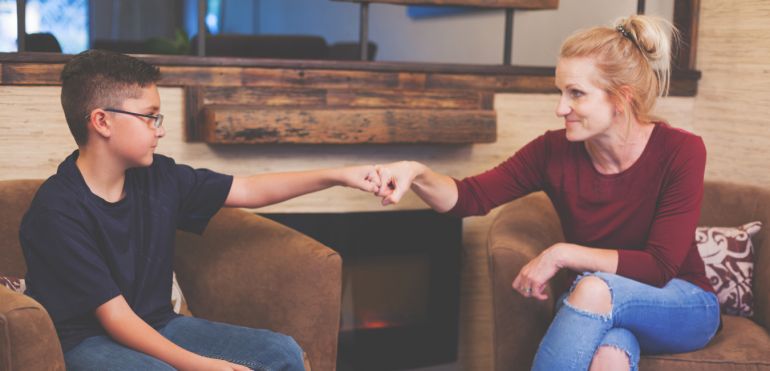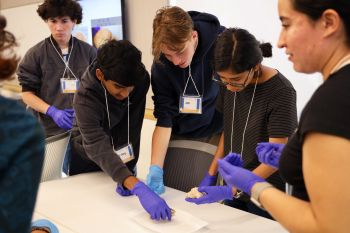In our latest episode of Adaptivity, our podcast on the science of adolescence, we talked with Sixto Cancel and Dr. Leslie Leve, both experts on youth in child welfare system, about what that system could look like if it reflected what we know about developmental science.
Both guests zeroed in on the critical need for connections during our adolescent years.
“When we think about what makes healthy development for adolescents, it is rooted in connection,” Sixto told host Dr. Ron Dahl. “It’s rooted in experiences that allow for healthy risk-taking, like learning how to drive, learning how to cook, being able to get exposure to different cities, different experiences—and being in the foster care system, those things are restricted.”
Research is clear that our relationships with parents and other caring adults are as important to our healthy development in our adolescent years as when we were small. Secure and supportive relationships with parents and other supportive adults can help us build resilience, develop a positive sense of self, and navigate challenges.
“These connections are so critical,” Leslie agreed. “Especially when you consider the histories that many foster youth have experienced where they have been moved from home to home, from family to family, and had some of their really important connections severed multiple times in their development.”
Sixto and Leslie outlined several ways the foster system can prioritize these essential connections for youth:
- Support families to avoid removing a young person from their home in the first place. Most young people in the foster care system are there as a result of neglect. “If the water and electricity is out and the child has asthma, you have to have the lights and water on,” explains Sixto. “Instead of bringing that child into foster care and spending months trying to get that child back home, how might we be able to pay those two things as a system to get that family up to date?”
- Prioritize kinship care. “When a removal has to happen, we should be ensuring that kin—uncle, grandmother, aunt, cousin—have the same resources that we provide to foster parents to take in their child,” says Sixto.
- Provide parenting support to foster and biological parents. “Parents, just like adolescents, are coming into their role…with a whole range of unique experiences,” says Leslie. “Maybe they haven’t learned some of those skills around how to communicate with adolescents, how to set limits without being overly punitive but still having a boundary, how to provide effective supervision or monitoring of your adolescent, how to problem solve when issues come up that you can discuss with your adolescent.”
- Ensure youth have a warm, consistent relationship with a mentor. “One of the top qualities I would say in that scenario is someone who’s persistent and just shows up day in and day out,” says Sixto. “No matter how much you might test the relationship, push back a little bit. If your home changes, if you have to go to a new school, having that person who is going to be connected with you and be able to show that they’re willing to stay in connection despite these things that might happen is so important.”
Youth in the foster system have already had to navigate challenges that would be unimaginable for many young people. We need to prioritize connections with caring adults so they can heal from past trauma and go on to thrive.
“We now know enough about the neuroscience, the development of young people, enough about trauma and enough about healing,” says Sixto. “There’s such an opportunity to actually start to invent new programs based on the latest science that we know around healing, around development and around trauma.
The question now, says Sixto, is how do we connect the science even further?
To hear more about evidence based ways to support youth in the US foster care system, listen to this episode of Adaptivity, “Rooted in Connection: Reimagining the Foster System for Adolescents.” If you like it, rate us and leave a review on Apple Podcasts or wherever you get your podcasts.



_350_233_80_c1.jpg)